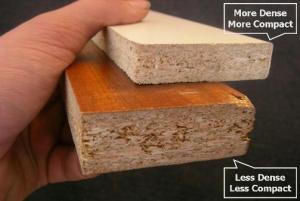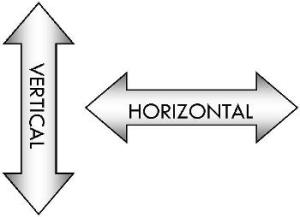Particle board has gotten a bad rap over the years and is commonly thought of as sub-par or inferior to “real wood.” Guess what particle board is made of…..ready?….Real Wood!
Particle board is maybe from the byproducts of wood used in the timber industry. It is shredded and dried then mixed with adhesives. This mixture is rolled out and pressed under great force and heat into long sheets of standard thicknesses. The sheets are cut to length then stacked and ready to be used. In the past, formaldehyde was a key ingredient in the adhesive but that is no longer the case.
The pressing of the material is varied to create different densities of material. Think about those Space Bags which are used for storing clothes. Put a sweater in one and seal it up. Measure the thickness and feel how floppy the bag is. Now, open it up and fill it with 4 more sweaters. Vacuum the air out until it is as thick as the bag with one regular sweater. As you pull the air out, the sweaters compress and the contents become denser. Pick it up now. It is the same thickness as the other, but I bet it is not as floppy as the uncompressed single sweater. The same goes for particle board. We use a grade which is denser than regular-use material. This makes for a stronger wallbed cabinet for our customers.
After the particle board is ready it is covered, repressed and heated with decorative papers and come out looking like a whole forest of wood varieties. Or they can be solid colors, patterned… the possibilities are endless! These finished boards handle a lot of wear and clean up easily with mild soap and water.
Many advances have been made across the industry to insure the product is durable and safe. We use products which have been certified by FSC- The Forest Stewardship Council. The FSC, ”sets standards for responsible forest management. A voluntary program, FSC uses the power of the marketplace to protect forests for future generations.” (https://us.fsc.org/index.htm)
Now you see it. Now you DON’T!
We are the Great American Wallbed Co. in Bellevue, WA.





